Evaluating the Dynamic Impact of Theater Performances and Sports Events on Parking Demand in Downtown Pittsburgh
Abstract
:1. Introduction
Related Literature
2. Data and Method
2.1. Data Description
2.2. Event-Based Regression Model
3. Results
3.1. Oridinary Least Squares’ Coefficients
3.2. Interaction Terms
3.3. Coefficient of Determination
4. Conclusions and Future Research
Funding
Institutional Review Board Statement
Informed Consent Statement
Data Availability Statement
Acknowledgments
Conflicts of Interest
References
- Shoup, D.C. Cruising for parking. Transp. Policy 2006, 13, 479–486. [Google Scholar] [CrossRef]
- Larson, R.C.; Sasanuma, K. Urban Vehicle Congestion Pricing: A Review. J. Ind. Syst. Eng. 2010, 3, 227–242. [Google Scholar]
- Larson, R.C.; Sasanuma, K. Congestion Pricing: A Parking Queue Model. J. Ind. Syst. Eng. 2010, 4, 1–7. [Google Scholar]
- Vickrey, W.S. Congestion theory and transport investment. Am. Econ. Rev. 1969, 59, 251–260. [Google Scholar]
- Krishnamurthy, C.K.; Ngo, N.S. The effects of smart-parking on transit and traffic: Evidence from SFpark. J. Environ. Econ. Manag. 2020, 99, 102273. [Google Scholar] [CrossRef]
- Idris, M.I.; Leng, Y.Y.; Tamil, E.M.; Noor, N.M.; Razak, Z. Car park system: A review of smart parking system and its technology. Inf. Technol. J. 2009, 8, 101–113. [Google Scholar] [CrossRef] [Green Version]
- Lin, T.; Rivano, H.; Le Mouël, F. A Survey of Smart Parking Solutions. IEEE Trans. Intell. Transp. Syst. 2017, 18, 3229–3253. [Google Scholar] [CrossRef] [Green Version]
- Parmar, J.; Das, P.; Dave, S.M. Study on demand and characteristics of parking system in urban areas: A review. J. Traffic Transp. Eng. 2020, 7, 111–124. [Google Scholar] [CrossRef]
- Srikanth, S.V.; Pramod, P.J.; Dileep, K.P.; Tapas, S.; Patil, M.U.; Sarat, C.B. Design and Implementation of a prototype Smart PARKing (SPARK) System using Wireless Sensor Networks. Int. Conf. Adv. Inf. Netw. Appl. Workshops 2009, 401–406. [Google Scholar]
- Chinrungrueng, J.; Dumnin, S.; Pongthornseri, R. iParking: A parking management framework. In 2011 11th International Conference on ITS Telecommunications; IEEE: New York, NY, USA, 2011; pp. 63–68. [Google Scholar]
- Karbab, E.; Djenouri, D.; Boulkaboul, S.; Bagula, A. Car park management with networked wireless sensors and active RFID. In 2015 IEEE International Conference on Electro/Information Technology (EIT); IEEE: New York, NY, USA, 2015; pp. 373–378. [Google Scholar]
- Pittsburgh Cultural Trust ParkPGH. Available online: https://trustarts.org/pct_home/visit/directions-parking/parkpgh (accessed on 1 August 2021).
- ALCO Parking Theater Square Garage. Available online: https://alcoparking.com/lot-garage/theater-square-garage/ (accessed on 1 August 2021).
- Fabusuyi, T.; Hampshire, R.C.; Hill, V.A.; Sasanuma, K. Decision analytics for parking availability in downtown Pittsburgh. Interfaces 2014, 44, 286–299. [Google Scholar] [CrossRef]
- Public Parking Authority of Pittsburgh. Parking Market Report of Selected Off-Street Parking Facilities, Pittsburgh, Pennsylvania. April 2010. Available online: https://apps.pittsburghpa.gov/council/garagestudy.pdf (accessed on 1 August 2021).
- Pittsburgh Cultural Trust. Available online: https://trustarts.org/ (accessed on 1 August 2021).
- National Centers for Environmental Information. Available online: https://www.ncdc.noaa.gov/cdo-web/ (accessed on 1 August 2021).
- Wackerly, D.; Mendenhall, W.; Scheaffer, R.L. Mathematical statistics with applications, 7th ed.; Brooks/Cole: Belmont, CA, USA, 2008. [Google Scholar]
- Chin, W.W. The partial least squares approach to structural equation modeling. Mod. Methods Bus. Res. 1998, 295, 295–336. [Google Scholar]
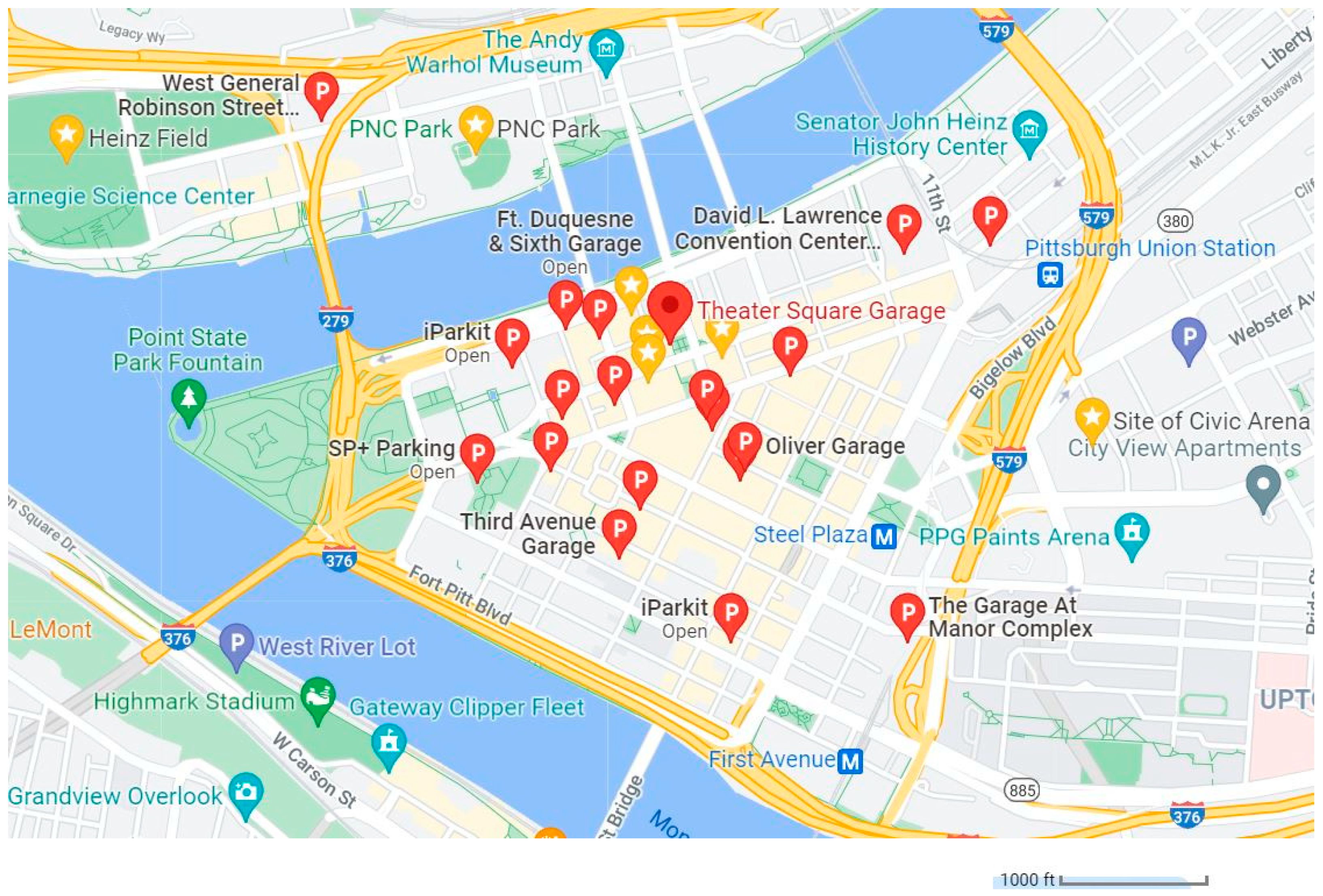
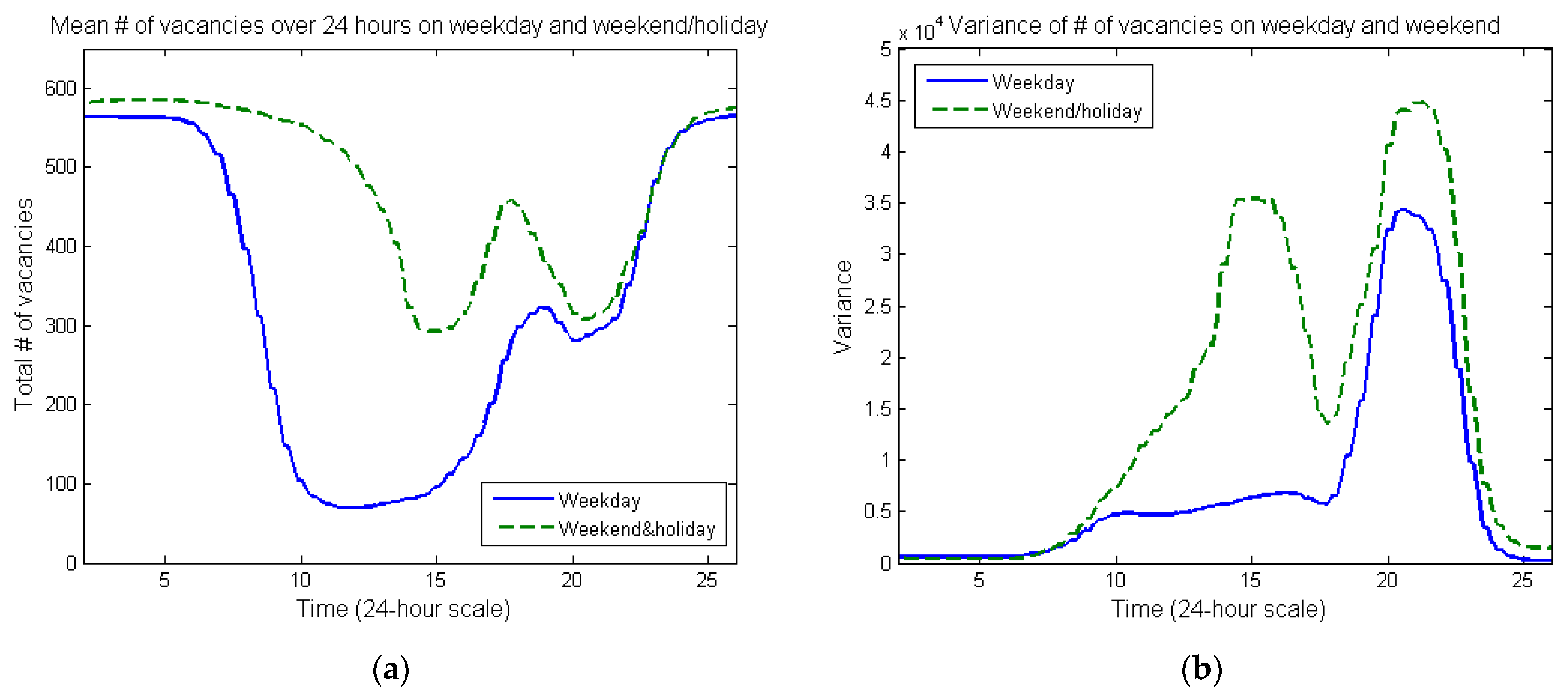

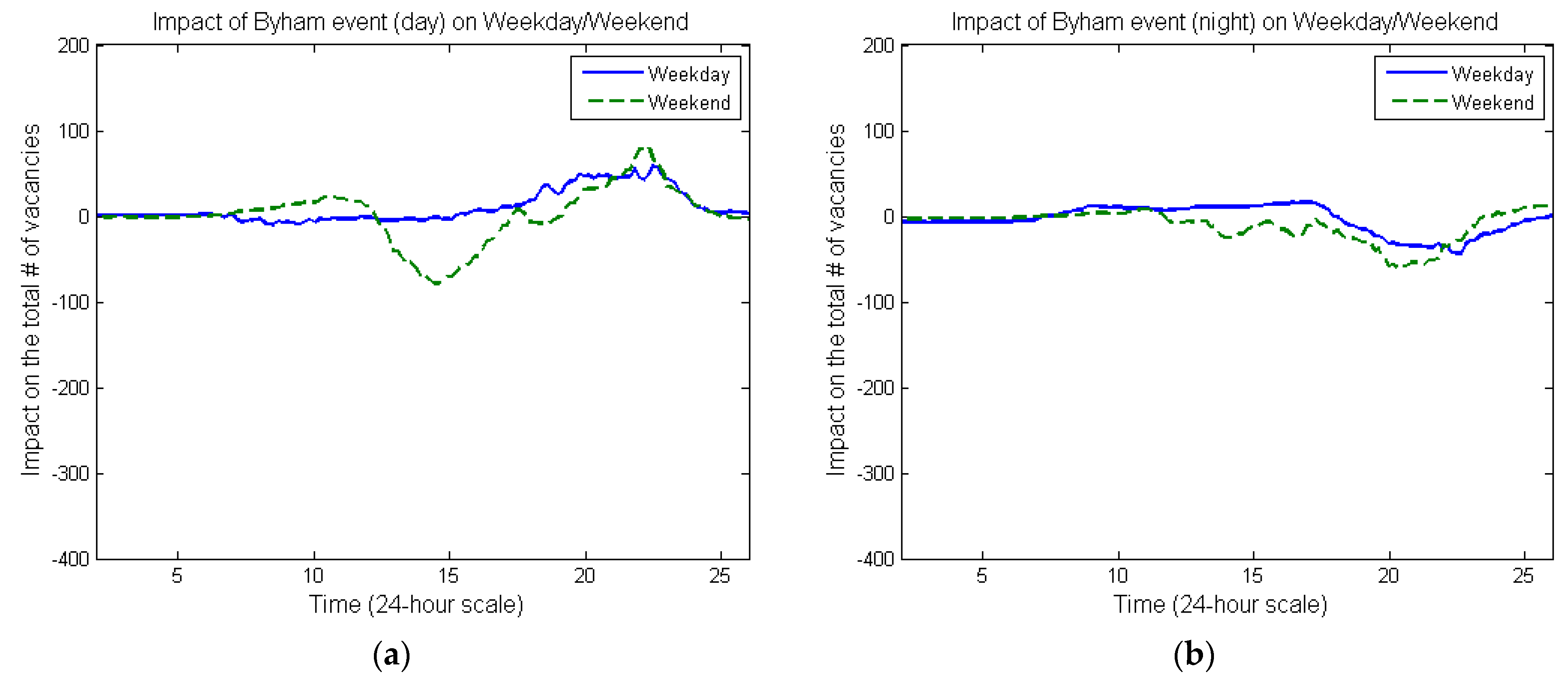
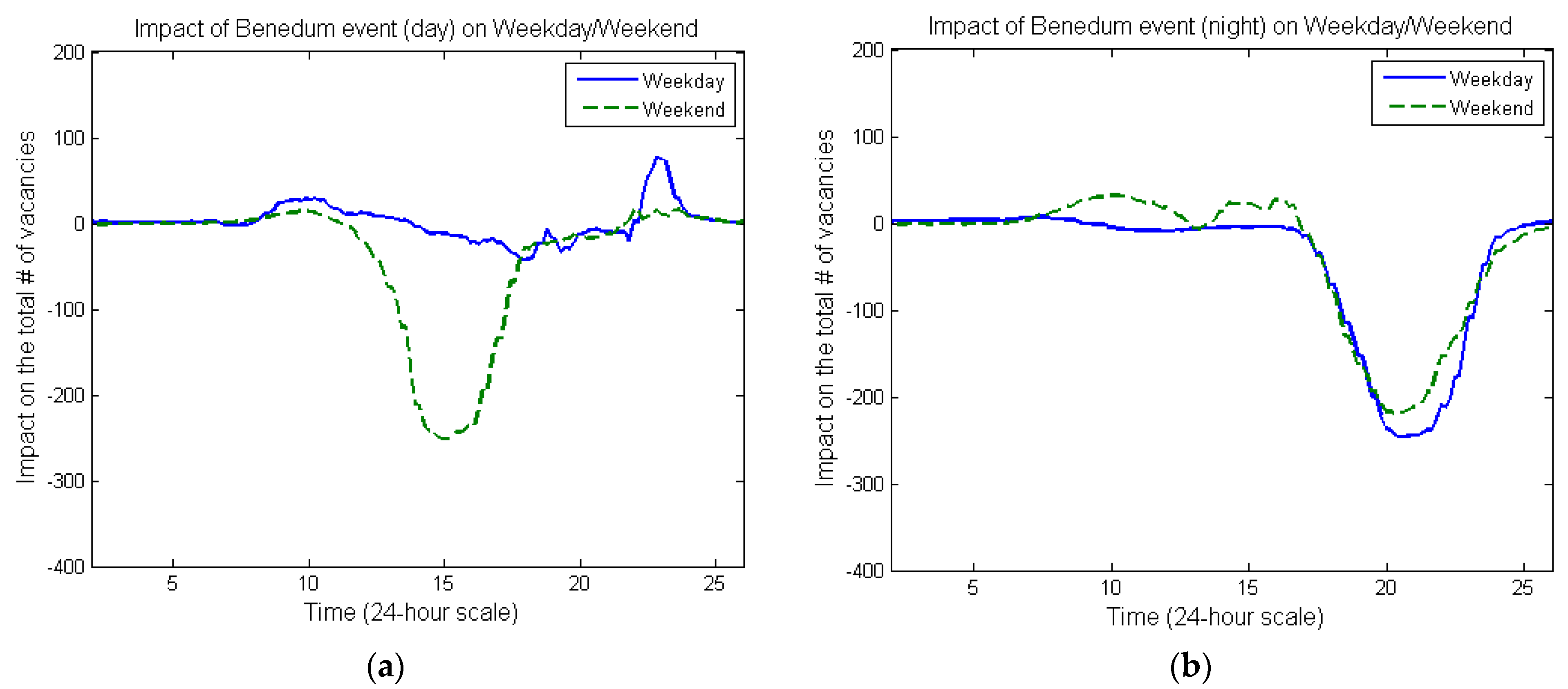
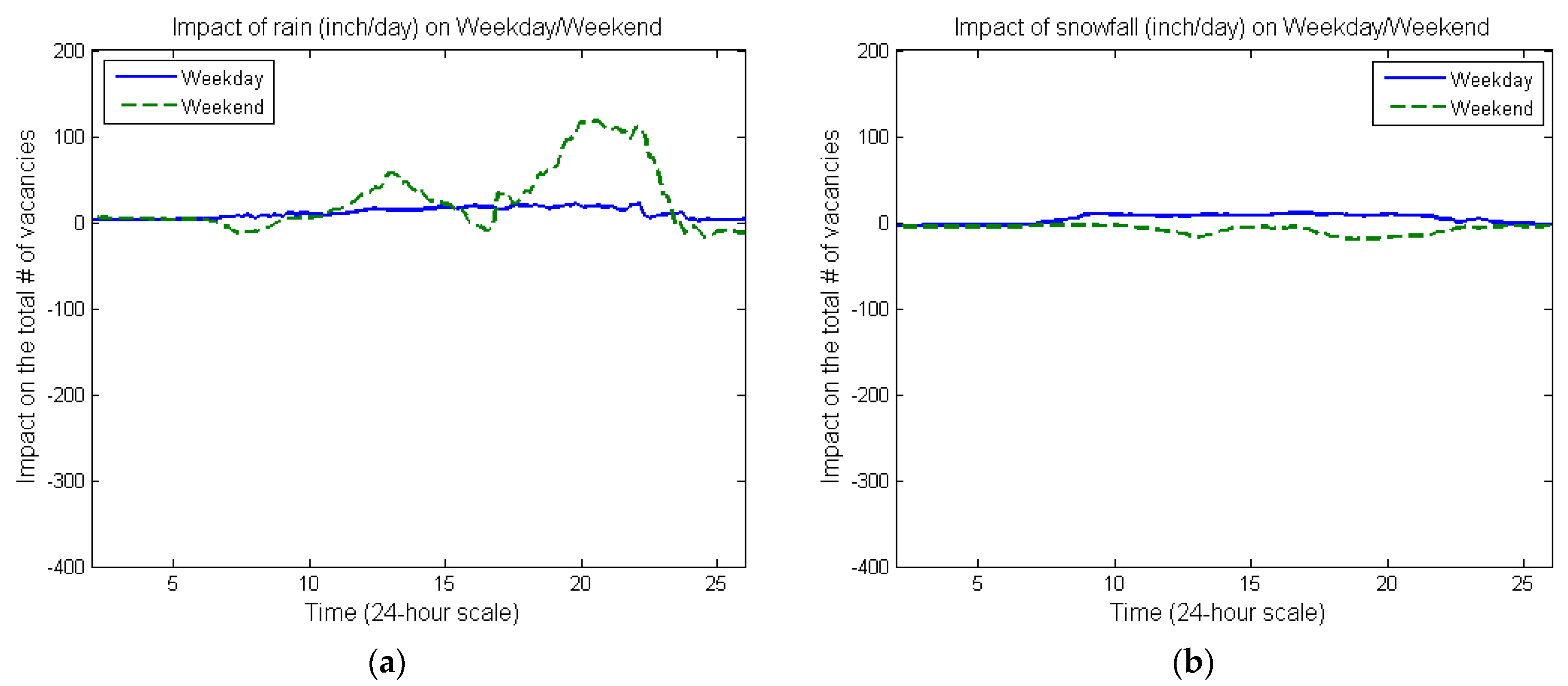
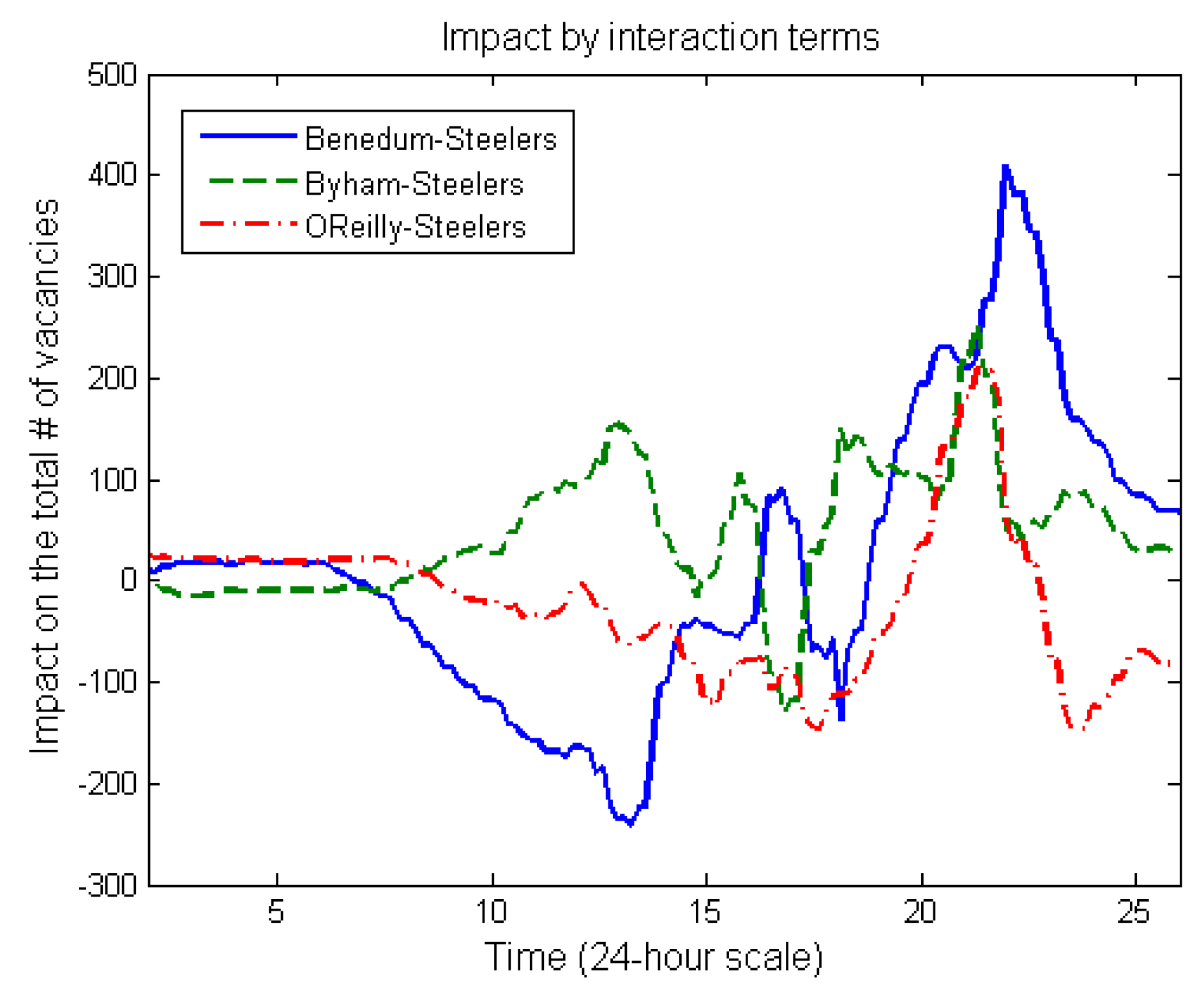
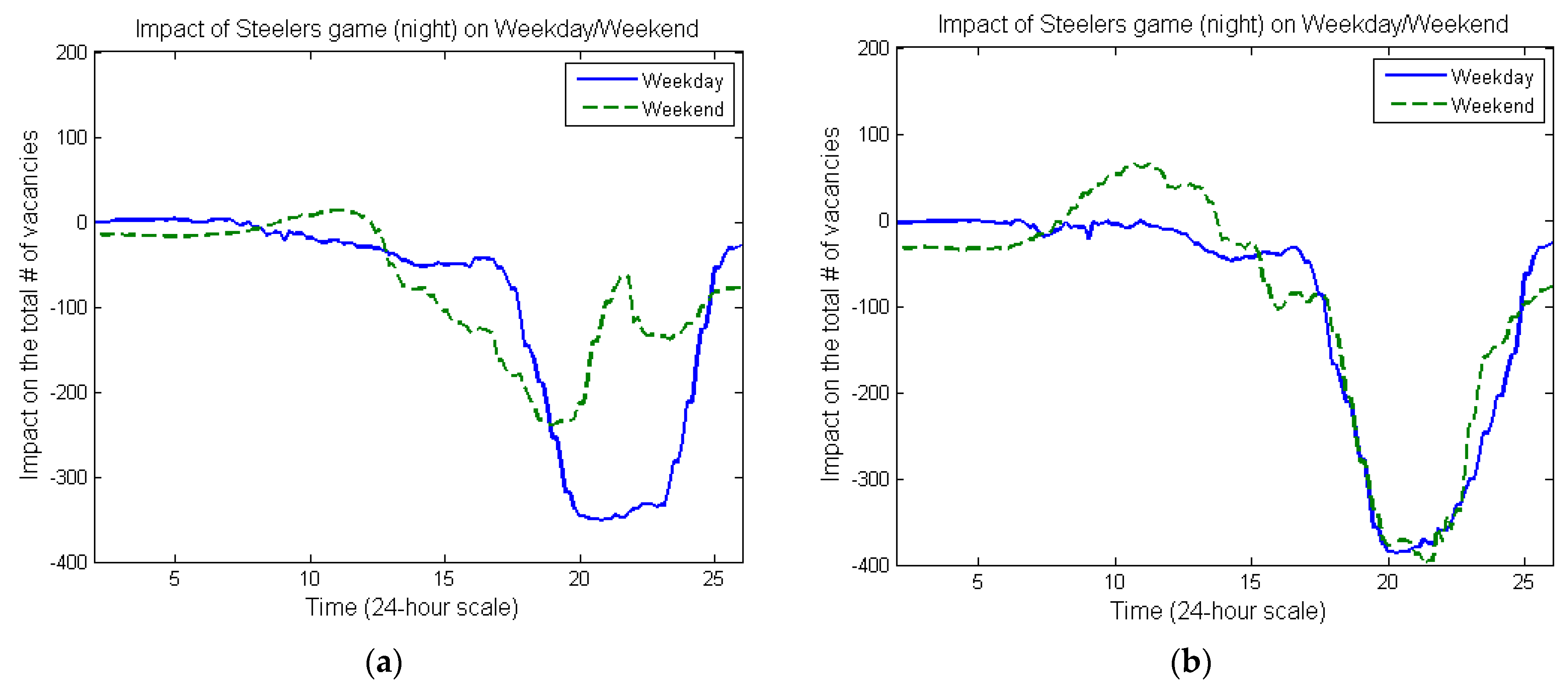
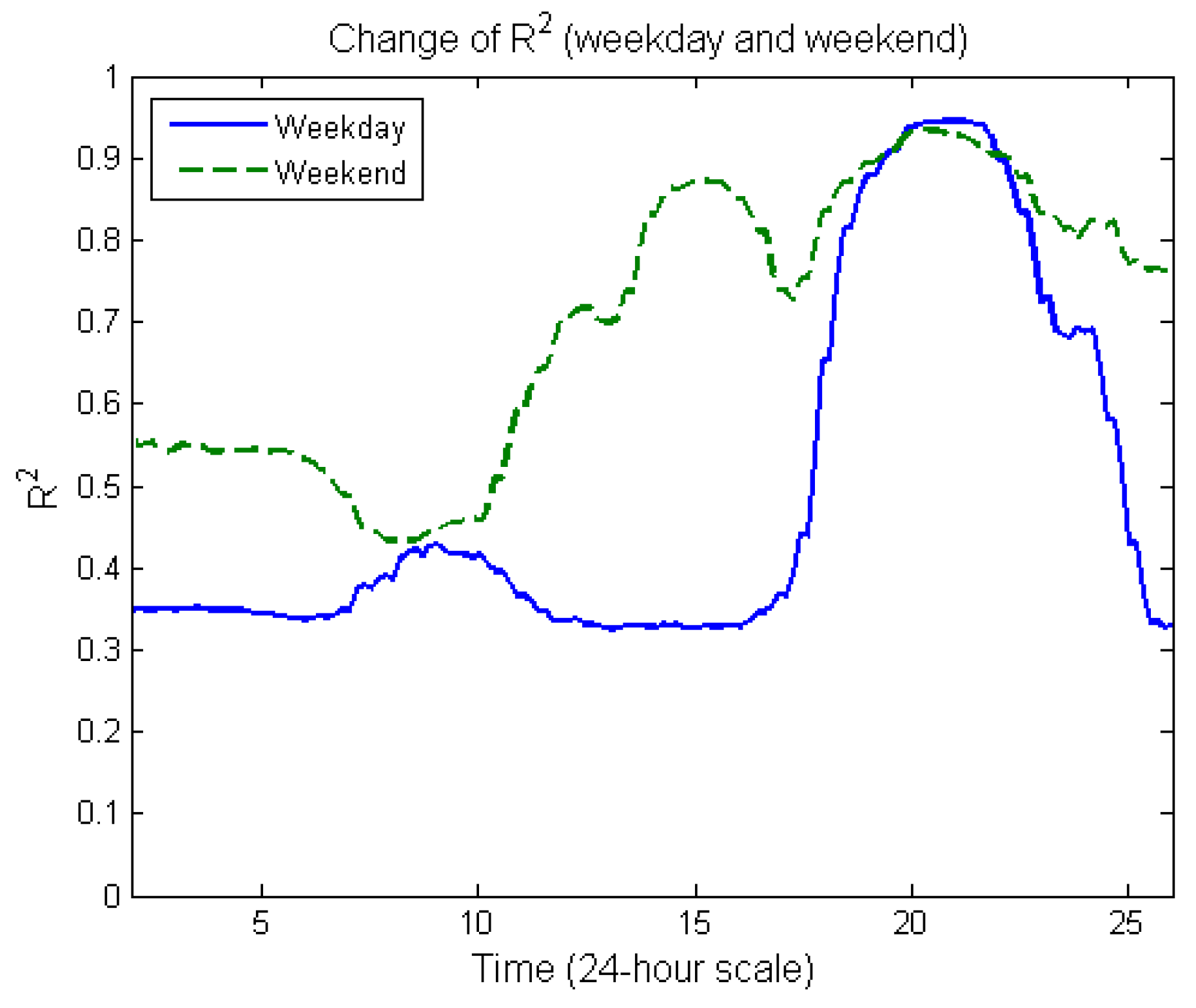
| Event Venue | Capacity 1 | Distance to Theater Square Garage (Walking Time 2) |
|---|---|---|
| Benedum Center | 2800 seats | Less than 0.1 mile (1 min) |
| Byham Theater | 1300 seats | 0.1 mile (2 min) |
| O’Reilly Theater | 650 seats | Less than 0.1 mile (1 min) |
| Heinz Hall | 2670 seats | Less than 0.1 mile (1 min) |
| PNC Park | 38,000 seats | 0.6 mile (12 min) |
| Heinz Field | 68,400 seats | 1.1 miles (22 min) |
| Mellon Arena (Civic Arena) 3 | 16,940 seats | 0.7 mile (17 min) |
Publisher’s Note: MDPI stays neutral with regard to jurisdictional claims in published maps and institutional affiliations. |
© 2021 by the author. Licensee MDPI, Basel, Switzerland. This article is an open access article distributed under the terms and conditions of the Creative Commons Attribution (CC BY) license (https://creativecommons.org/licenses/by/4.0/).
Share and Cite
Sasanuma, K. Evaluating the Dynamic Impact of Theater Performances and Sports Events on Parking Demand in Downtown Pittsburgh. Smart Cities 2021, 4, 1391-1402. https://doi.org/10.3390/smartcities4040073
Sasanuma K. Evaluating the Dynamic Impact of Theater Performances and Sports Events on Parking Demand in Downtown Pittsburgh. Smart Cities. 2021; 4(4):1391-1402. https://doi.org/10.3390/smartcities4040073
Chicago/Turabian StyleSasanuma, Katsunobu. 2021. "Evaluating the Dynamic Impact of Theater Performances and Sports Events on Parking Demand in Downtown Pittsburgh" Smart Cities 4, no. 4: 1391-1402. https://doi.org/10.3390/smartcities4040073
APA StyleSasanuma, K. (2021). Evaluating the Dynamic Impact of Theater Performances and Sports Events on Parking Demand in Downtown Pittsburgh. Smart Cities, 4(4), 1391-1402. https://doi.org/10.3390/smartcities4040073





